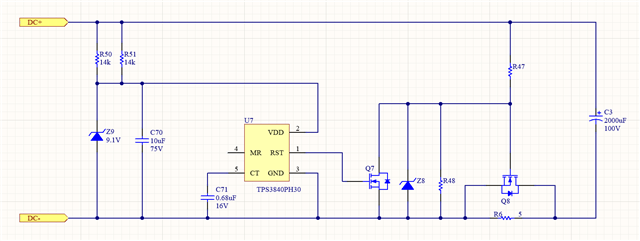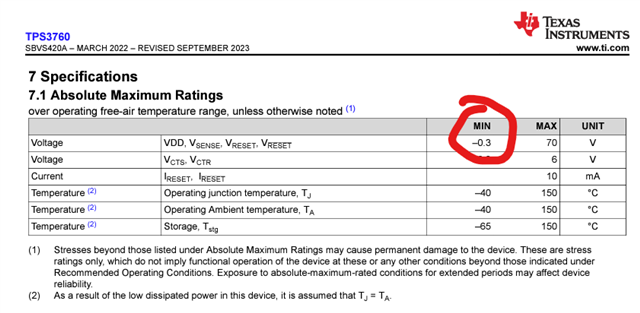Other Parts Discussed in Thread: TPS3760
Tool/software:
We are using the TPS3840 in a pre-charge circuit to control the charging of a large electrolytic capacitance on application of power. The TPS3840 reset output on power-up keeps a power resistor in-circuit to decrease the charging current; when the TPS3840 reset time expires, the precharge resistor is bypassed. The capacitors are followed by a MIL-STD-1275 compliant filter with reverse polarity protection. In order to meet MIL-STD-1275, this pre-charge circuit must also meet the reverse-polarity requirements.
The VDD line for the TPS3840 is created from the main system input voltage using a zener diode regulator. If the power leads are reversed, the zener diode will clamp the voltage between GND and VDD to its forward drop; according to the datasheet, that voltage will vary from ~ -0.5V to -0.9V across the temperature range of -40C to 125C at a current of 5mA. However, the TPS3840 has an absolute minimum voltage of -0.3V. Will placing a reverse-biased Schottky diode in parallel with the zener provide sufficient protection? Is the zener sufficient on its own due to the current limiting resistors? Are there any other solutions you would propose to limit the reverse voltage in this situation?
Simplified schematic is shown below. Input voltage during the reverse polarity test will be -33VDC, meaning ~5mA will be drawn through Z9 and R50/51.



